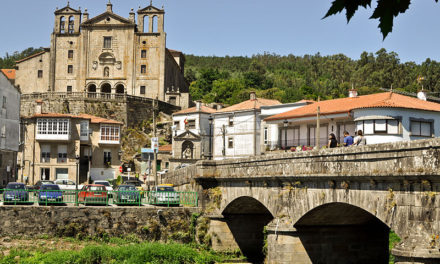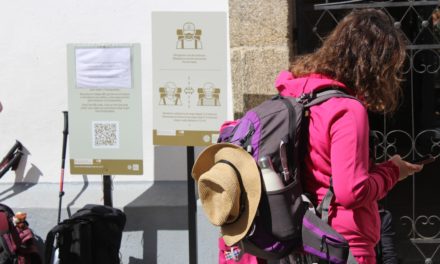Last May (2019) the Pilgrim’s Office delivered 46,673 Compostelas, a record compared with the 40,665 which where delivered in the same month in 2018. Once again there were more women than men: 24,163 women (51.77%) and 22,510 men (48 , 23%). 43.633 (93.49%) arrived on foot, while 2.750 (5.89%) by bicycle, 199 (0.43%) on horseback, 4 (0.01%) by sailing boat and 87 (0.19%) by wheelchair.
The mayority were Spanish, 12,733 (27.28%); Madrid being the principal point of origin, followed by Andalusia and Catalonia.
The total number of foreigners was 33,543 (71.87%); the main countries of origin being Germany (4,986 pilgrims, 14.86%); followed by Italy (3,537 pilgrims, 10.54%); United States (3,500 pilgrims, 10.43%); Portugal (2,120 pilgrims, 6.32%); United Kingdom (1,937 pilgrims, 5.77%); France (1,670 pilgrims, 4.98%); Ireland (1,395 pilgrims, 4,16%) and Korea (1,294, 3,86%).
Regarding the most traveled routes, the first was the French Way (25,705 pilgrims, 55.07%); followed by the Central Portuguese Way (10,455 pilgrims, 22.40%); the Portuguese Coastal Way (2.952 pilgrims, 6.32%); the North Way (1,992 pilgrims, 4.27%); the Camino Primitivo (1,911 pilgrims, 4.09%); the English Way (1,742 pilgrims, 3.73%); the Via de la Plata (1,430 pilgrims, 3.06%); the Winter Road (208 pilgrims, 0.45%); and from other ways 163 pilgrims (0.35%).
Regarding the starting points, the most prominent were: Sarria 11,664 pilgrims (24.99%); Porto [Central Way] 5,416 pilgrims (11.60%); S. Jean P. Port 5,405 pilgrims (11.58%); Tui 2,194 pilgrims (4.70%); Ferrol 1,702 pilgrims (3.65%); Leon 1,511 pilgrims (3.24%); Porto [Coastal Way] 1,429 pilgrims (3.06%); Valença do Minho 1,243 pilgrims (2.66%); Oviedo 1,167 pilgrims (2.50%); O Cebreiro 1,094 pilgrims (2.34%); Ponferrada 908 pilgrims (1.95%); Roncesvalles 714 pilgrims (1.53%); Le Puy 668 pilgrims (1.43%) and Irun with 655 pilgrims (1.40%).











